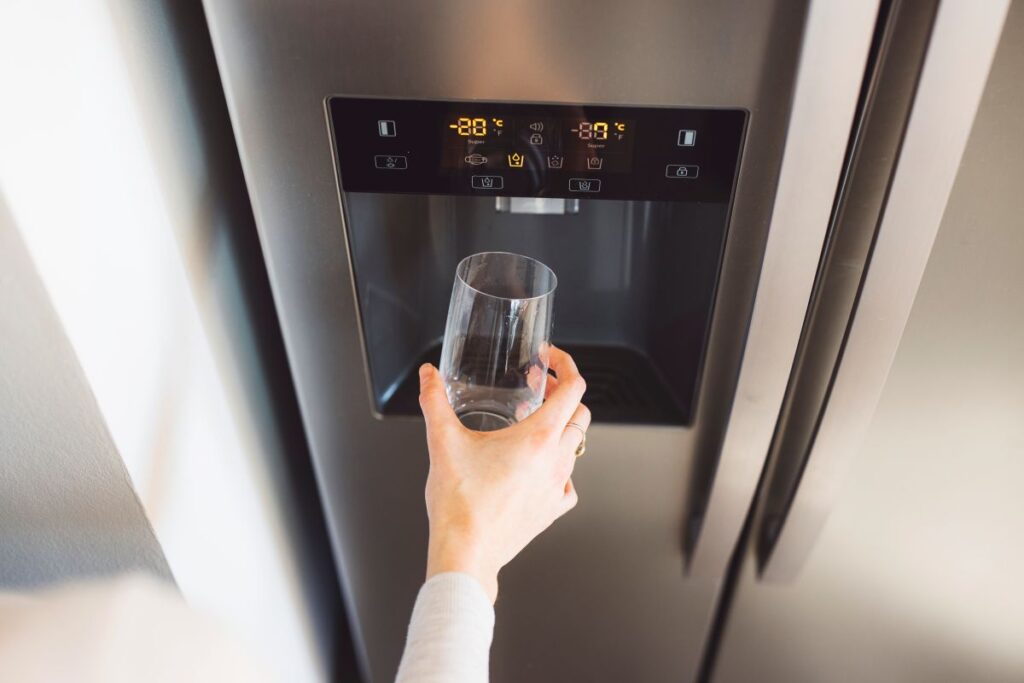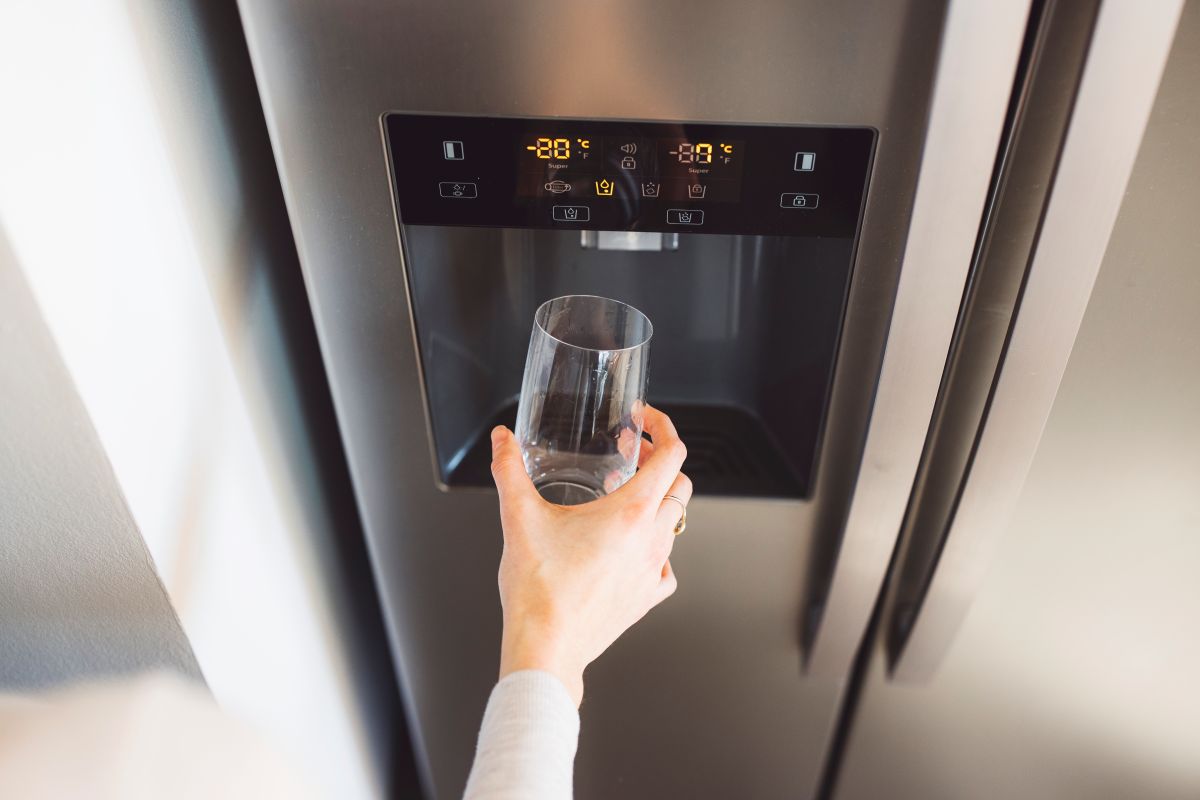When it comes to installing a fridge with water dispenser, there are more things to consider than you might originally think. Thankfully, you have a Ryde plumber to give you the inside scoop!

Plumbed vs Non-Plumbed
One of the key considerations when choosing a fridge with water dispenser is whether you want it plumbed or non-plumbed.
A plumbed in fridge is connected to the mains water in your home so you can enjoy limitless chilled water. This fridge requires its own water connection, so you will need a licensed plumber to install it. These models are typically more expensive to buy upfront and to install.
A non-plumbed fridge with water dispenser comes with an internal tank that needs to be manually filled, then refilled again and again, forevermore. It’s important to only fill the tank with water and to clean it every few weeks. Non-plumbed fridges are usually cheaper to buy, and there are no installation costs. They’re a popular choice when there’s no nearby water connection, e.g. in the shed.
Ice Dispensers
If you entertain regularly or live in a warmer climate, an ice dispenser can be handy to have. However, for families with kids, the ice dispenser can be quite the novelty. Next thing you know, you’re going through ice at a rate your fridge struggles to replenish fast enough, leaving your evening G&T sadly iceless. Bottom line, fridges with ice dispensers cost more to buy and to run, so consider whether the humble ice tray is all you need.
Energy Efficiency
Energy-efficient fridges will save you a lot of money on energy bills each year. The more stars on its energy rating, the cheaper it is to run, which for a fridge is incredibly important. They are also much more sustainable and lower the overall energy demand. Fridges with water dispensers are often less energy efficient than standard fridges, so factor higher running costs into your final decision.
Space
Fridges with water dispensers tend to be bigger than regular fridges, so be sure to measure the available space before choosing a model. You may wish to consult a plumber to ensure a dedicated water point can be installed in the space.
The addition of water tanks and ice makers can also reduce the interior space in your fridge and freezer. However, the trade-off is not needing to have jugs of water stored in the fridge.
Noise Level
Water dispensers can be noisy.. If you have young children, reactive pets, or thin walls, then some models may not work for your kitchen.
Filtration
Having a fridge with a filtered water dispenser means you can enjoy better-tasting water with fewer impurities. However, it also means changing water filters regularly. Check the price of replacement filters and how often they need replacing before deciding on which fridge to buy.
Dispenser Size
Some fridges have a small, fiddly space underneath the dispenser, making it suitable for filling a glass but not a jug. Depending on how your household plans to use the dispenser, this could be annoying.
For those with kids, the dispenser should be simple to use. If it’s not, you might find they’re dispensing a whole lot of lovely, chilled water directly onto the floor!
Cleaning and Maintenance
Fridges with water dispensers are notoriously hard to clean, but poor maintenance can lead to problems including mineral build-up, mildew and bacteria growth, and water that tastes and smells bad. When you’re researching the various models, look for components that are simple to remove and clean.
Breakdowns and Plumbing Problems
The biggest problem plumbers see with plumbed-in fridges is when they’ve been installed incorrectly. This can lead to water line issues, fridge leaks, burst pipes, and clogs in the internal system.
The initial financial outlay for a plumbed-in fridge is considerable (the most popular models retail for between $2000 – $4500), so don’t risk your investment with a DIY install. Attempting to do it yourself will inevitably lead to additional expense down the line, including repairs, water damage, denied insurance claims, and fines for non-compliant plumbing.



